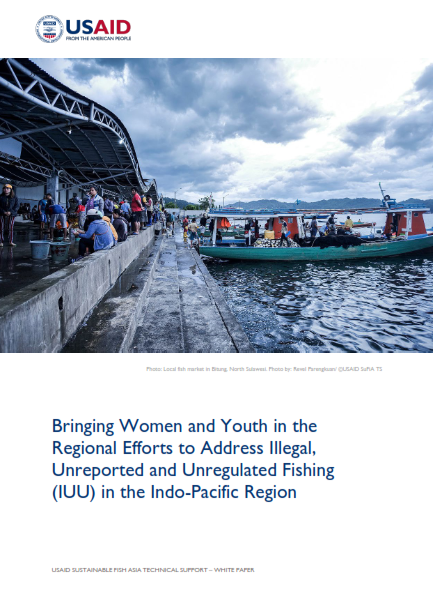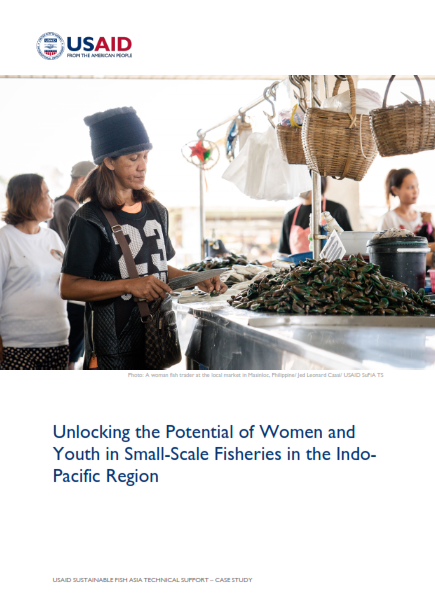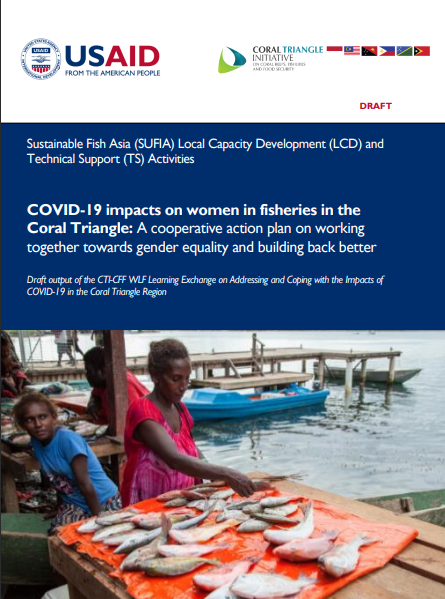Timor-Leste Launches the Nation's First 'No Take Zones
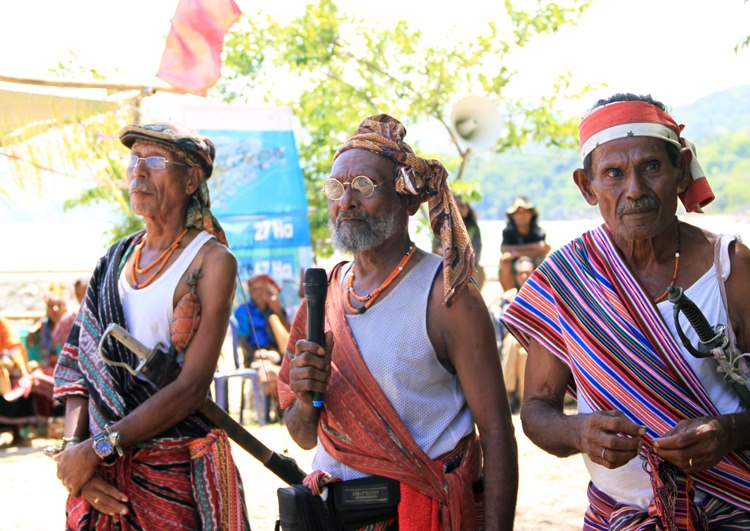 Timor-Leste is located at the heart of the Coral Triangle and holds the highest diversity of marine life in the world. On February 7, 2013, Timor-Leste launched the nation’s first ‘No Take Zones’ (NTZs), where fishing restrictions and other protective measures have been put in place to enable the replenishment of fish stocks and the protection of coral reefs that support local people. The protective measures are aimed at conserving the as-yet unrealized value of Timor-Leste’s marine-based natural capital, which is essential for the food security and economic development of one of the world’s newest and least developed countries.
Timor-Leste is located at the heart of the Coral Triangle and holds the highest diversity of marine life in the world. On February 7, 2013, Timor-Leste launched the nation’s first ‘No Take Zones’ (NTZs), where fishing restrictions and other protective measures have been put in place to enable the replenishment of fish stocks and the protection of coral reefs that support local people. The protective measures are aimed at conserving the as-yet unrealized value of Timor-Leste’s marine-based natural capital, which is essential for the food security and economic development of one of the world’s newest and least developed countries.
The announcement of these zones was made on Feb 7, 2012, by the Timor-Leste Secretary of State for Fisheries, Rafael Periera Goncalves, in an event held in Com, a coastal community five hours from the capital of Dili. The event was attended by Judith Fergin, Timor-Leste’s U.S. Ambassador, Mr. Rick Scott, USAID Mission Director, senior officials from the Timor-Leste Government and community leaders, in demonstration of the joint commitment which has brought about these important management improvements.
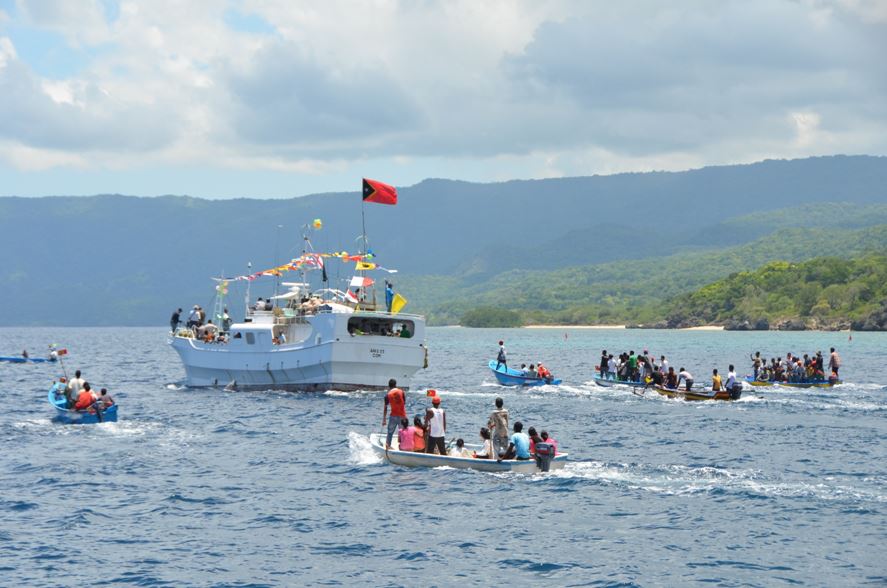 The seven ‘No Take Zones’ are embedded within broader multiple-use marine protected areas, covering 207 square kilometers of coastal waters of the Island nation’s only National Park. The zones encompass important coral reefs which help maximize climate resilience, serve as reef fish spawning sites, enable fisheries replenishment, and protect key dive and snorkel sites for tourism purposes.
The seven ‘No Take Zones’ are embedded within broader multiple-use marine protected areas, covering 207 square kilometers of coastal waters of the Island nation’s only National Park. The zones encompass important coral reefs which help maximize climate resilience, serve as reef fish spawning sites, enable fisheries replenishment, and protect key dive and snorkel sites for tourism purposes.
Secretary Gonçalves said, ‘We appreciate the interest in the development of fisheries sector in Timor-Leste, which plays an important role in the prevention of malnutrition, food security and livelihoods of fishermen and people of Timor-Leste.’
“Today’s launch of the No Take Zones holds great promise for the future of Timor-Leste’s marine environments and the contribution they can make to artisanal fisheries, local livelihoods and economic development,” said Conservation International’s Timor-Leste Country Director, Candice Mohan. “A well managed coastal ecosystem is extremely valuable. It can provide a sustainable supply of seafood, is critical for marine tourism, and increases the resilience of local communities to the pressures of climate change by ensuring diversified livelihood options.”
The announcement of the NTZs follows the results of a Rapid Assessment Program (RAP) marine survey of Timor-Leste’s coastal waters, carried out in August 2012 at the request of the Government and led by Conservation International (CI) with generous support from USAID’s Coral Triangle Support Partnership (CTSP). The RAP survey was conducted by a team of international and Timorese scientists and the results showed that the coral reefs in Timor-Leste were some of the healthiest and most diverse in the world.
"We found that the coastal waters surrounding Timor-Leste contain the second-highest average of reef fish species per site for any region on Earth to date,’ said Dr. Mark Erdmann, a CI marine adviser and biologist. “This biodiversity also extends to the coral reefs with three potentially new coral species identified.”
The survey results have increased Timor-Leste’s reef fish species records to a highly significant 814 species (six of which are likely new species), with visual counts averaging nearly 212 species per site. The coral reefs that were surveyed were also recorded as being exposed to cooler water temperatures than reefs in neighboring countries. This, combined with strong currents, is likely to confer strong climate change resiliency to Timor-Leste’s coral reefs, which help provide buffer against storms and serve as nurseries for locally-important fish, benefiting human well-being in Timor-Leste. With appropriate management, these resources hold significant potential for the food security and economic development of one of the world’s newest and least developed countries.
Secretary Goncalves, who invited CI scientists to return and complete the marine survey in areas not yet explored, said, ‘The Marine RAP is important as the information allows us to better understand our marine resources. ”
In response to the Timor-Leste Government’s plans for fostering tourism growth as a contribution to economic development, Erdmann also noted the great potential for marine tourism to work in synergy with improved protection and management efforts. ‘It is important to set clear regulations from the outset of such activities to ensure that local communities derive significant benefits from tourism in a way that encourages even better stewardship of their reefs’.
The ‘No Take Zones’ will be enforced through a co-management approach between local, district and national fisheries authorities, which were developed with funding support from the USAID CTSP. CTSP has been supporting the Timor-Leste government and the fishing communities of Com, Tutuala and Lore to develop community-based marine management practices, centered on improved biological and ecological knowledge.
Photo Captions:
Upper Right: Village heads from the Nino Konis Santana National Park dress in traditional garb to celebrate the launch of the "no-take zones" Credit: USAID CTSP
Lower Righyt: Local fishermen in their boats at the launch of Timor-Leste's first ever "no-take zones" Credit: USAID CTSP

